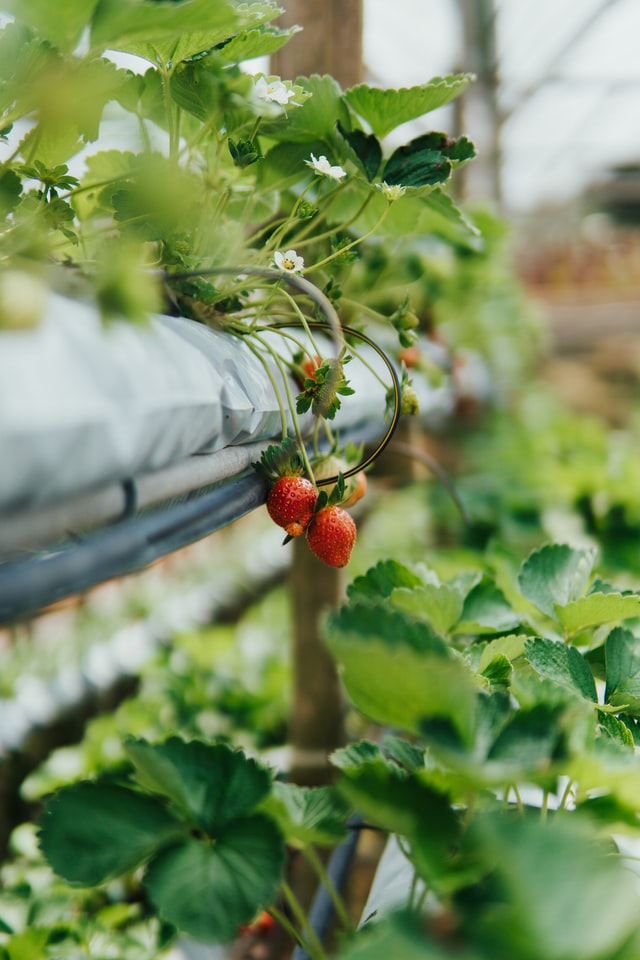Some might say that since the industrial revolution the farming industry has been falling into decay, year after year. But something we’ve noticed these past years is the increasing importance some people give to the words “organic” and to the overall idea of natural food, free of chemicals. This was an opportunity, grabbed by a large part of farmers, to adapt their systems to ones more efficient, natural, and with more healthy outcomes – Aquaponics!
Now, aquaponics isn’t a new trend. It has been around for hundreds of years, dating as far back as 5 A.D. in South China, where farmers used the symbioses between fish and rice to create the well-known paddy fields. Then, for thousands of years, with the rising of “normal” soil agriculture, it disappeared for a while, but we’ve been seeing a noticeable increase in this practice – one that can be adapted to a large scale, or even to a small backyard.
But first, let’s get our heads around aquaponics:
Aquaponics 101
The term “aquaponics” might remind you of some other terms, like “hydroponics” and “aquaculture” and, in reality, you’re not too far away since it’s actually the combination of those two practices. So, hydroponics refers to a farming system that uses water instead of solid soil, like dirt, to grow plants, vegetables, and herbs. In this case, you have to treat the water with the right chemicals in order to reach a nutrient-filled environment, important for the growth of the plants. But, if you join it with aquaculture – the process of raising living aquatic creatures, like fish, crayfish, crustaceans, mollusks, among others – the story is different and we will explain to you why.
The overall idea of aquaponics is to mimic a natural symbiosis that occurs in Nature. First, the fish live in a water tank, eating, breeding, and creating excrement. If this was the full story, the excrement would cause the water toxicity to rise to dangerous levels for the creatures, but this is where bacteria enter. Nitrifying bacteria grab the ammonia from the excrement and turn it into nitrates, which, coincidentally (or not) is the right nutrient for plants to grow. So, through a system of tubes, the water from the fish tank is pumped to a hydroponics farm where the plants are. They use the nutrients to grow and release oxygen, so when the water is pumped back again to the fish tank, it creates an oxygen-rich environment, where the fish can live healthily.
Words, words, and more words – we know, it might look like a complex system for you, right now, but in reality, you can actually build, effortlessly, a small-scale aquaponics farm in your backyard, with some amazing aquaponics kits. Cheap, easy-to-use, and fun to work with, they will offer you a rewarding hobby that will give you food (fish and vegetables) and, possibly, a new source of income! This is a quick rundown of some great aquaponics kits, on the market, at the moment, but if you’re looking for a more detailed guide, be sure to click here.
Top Home Aquaponic Kits
Genesis G-24 Model
Even though this is an easy-to-use aquaponics kit, due to its massive capacity, it’s definitely on a professional level. It measures 48’’ x 96’’ x 42’’ / 1.2m x 2.4m x 1.1m (width x length x height) and is capable of storing a 140 gallon fish tank – strong enough to power 2 growing beds. To give you an overall idea, you could be producing 240 pounds of vegetables and 30 pounds of fish, per year.
The other great features is the fact that it has all you need! From the fish tank, to the growing beds, air pumps, pre-cut plumbing connections, radial filter, clay pebbles and many other components that will be pretty handy. Lastly, an insulated water tank allows you to place the whole thing outside, without having to worry with the temperature killing your fish!
Professional AquaBox with Pump Reservoir and Tubing
This wooden beauty combines efficiency and good looks – all for a more than fair price! Also coming with all the components you’ll need, the kit measures 35’’ x 58’’ x 26’’/ 89cm x 1.5m x 66cm (width x length x height), making it a bit smaller than the last one, even though it can fit a 30 gallon fish tank.
Easy to assemble, and simple to use, this kit has the hydro clay pebbles media on top and the fish tank below, meaning you won’t have any difficulty feeding the fish (which is pretty much all you need to do). Lastly, and important not to overlook, it comes with a 30-day warranty.
Brio 43368 System, in White
What happens when you combine an ultra modern approach with a classic indoor aquaponics style? The Brio 43368 happens! Even though the system might look like a traditional one, there’s a couple of features that will blow our mind. One of them is a programmable lighting system, meaning you can illuminate your plants and your fish, with different intensities, at different times of the day.
The main structure measures 16’’ x 19.5’’ x 30’’ / 41cm x 50cm x 76cm (width x length x height) and it fits a 10 gallon fish tank, so you won’t be able to produce as much as the last two. That’s why it’s not suggested for large fish consumption, but for homesteading instead, like smaller herbs, vegetables and flowers. It’s also the cheapest of the three, so for beginners it might be the best one for testing the waters.
Final Thoughts
Now that you’ve understood (hopefully) what aquaponics is really about and have some interesting choices in mind, it’s time to roll your sleeves and get to work. Trust us when we say this is an extremely rewarding hobby, be financially or mentally. Don’t forget to read about which fish and plants are better suited for your climate, and get to work!

